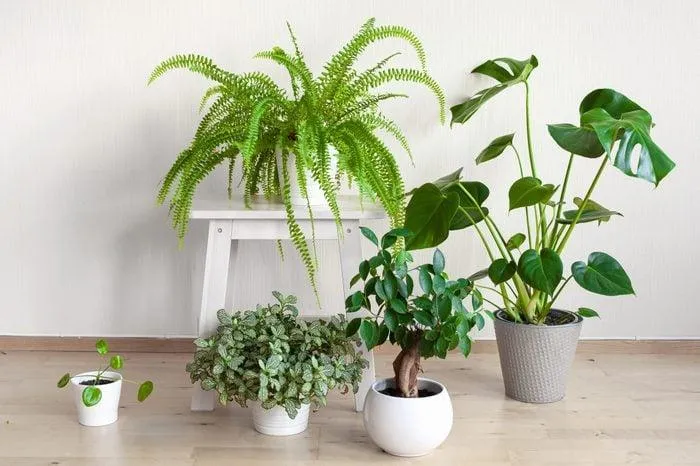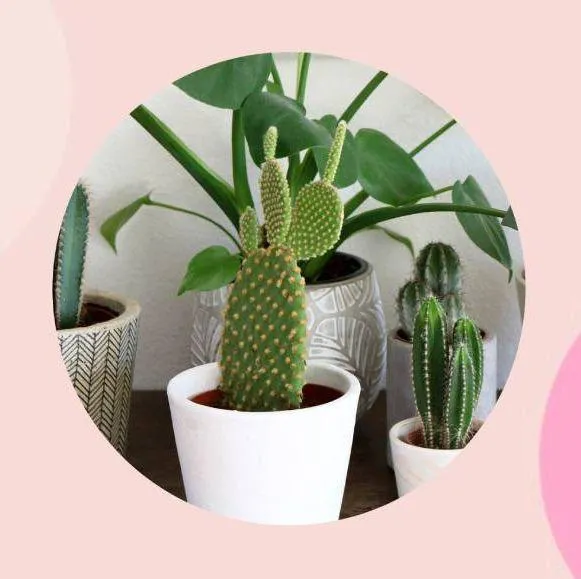Indoor Trees That Thrive with Minimal Light
For anyone looking to bring the beauty of greenery indoors but lacking ample sunlight, fear not – there are several low-light loving trees perfectly suited for life inside. Whether in a basement apartment, dark office, or north-facing room with minimal natural light, the following selections should do just fine with less-than-ideal lighting conditions.
Snake Plant (Sansevieria)
- One of the hardiest and most forgiving indoor plants, snake plants can thrive on very little light.
- Tall and upright with stiff, sword-like leaves in varied colors, they add architectural interest to any space.
- In my experience keeping snake plants, they can go weeks without water and still perk right back up when given a drink.
From their ability to tolerate low light, infrequent watering, and a wide range of temperatures, snake plants are an ideal choice for busy households or locations with less-than-optimal growing conditions. They require very little maintenance yet offer an exotic, low-key backdrop to any room.
Chinese Evergreen (Aglaonema)
Chinese evergreen is another great option for low-light interiors. Its broad, colorful leaves ranging from cream to red to dark green make an attractive accent. While it prefers some direct sun, it will survive quite well in low indirect light. Its tolerance for lower light levels and irregular watering make it ideal for offices, apartments with little natural light, or homes with infrequent watering schedules.
Here’s a real-life case – I have a Chinese evergreen thriving in a north-facing room with only one small window. It received some morning sun when I first brought it home over a year ago. Since then, it’s received almost no direct light. Nevertheless, it’s grown considerably and remains perfectly healthy with weekly watering. Its hardiness and colorful foliage have earned it a permanent spot in that dim room.
English Ivy (Hedera helix)
English ivy thrives in environments with very low light, making it ideal for basements, poorly lit offices, north-facing rooms, and other low-light interiors. I’ve found through personal experience that English ivy tolerates neglect better than most other indoor plants. It can go several weeks without water and still bounce back when conditions improve. Additionally, English ivy releases cleaning oxygen into the air even with minimal light.
Its ability to climb walls and trail across surfaces allows creative vertical gardening arrangements. English ivy’s glossy green leaves prevail despite darkness. Just be aware it can spread rapidly if given any opportunity, so take care with placement near carpets or furniture you don’t want permanently decorated with vines! Overall though, English ivy remains low maintenance while brightening interiors with very little light.
Cast Iron Plant (Aspidistra elatior)
Cast iron plant well deserves its name, being exceptionally resilient to inadequate conditions. Native to shaded forests of eastern Asia, it demands little light, moisture, or care to thrive. I’ve seen cast iron plants maintaining themselves for months on end in windowless offices or dim basements with sparse watering. Despite having no need for much attention, their arching leaves and upright habit lend an exotic feel.

Their endurance has made cast iron plants popular indoor plants since Victorian times. While their lack of flowers and slow pace may seem boring to some, I appreciate cast iron plants for reliably enhancing interiors with practically zero maintenance. Even in truly dismal lighting, they persist admirably. Their durability exceeds that of most other houseplants by far.
Peace Lily (Spathiphyllum)
While peace lilies prefer brighter conditions, they may survive for years in low-light interiors if other needs are sufficiently met. Their broad, glossy leaves add a touch of the tropics, and provide atmosphere even when not in bloom. If cared for properly with moist soil and fertilizer, peace lilies will sometimes reward low-light living with glorious white blooms.
In my experience overwintering peace lilies indoors, maintaining high humidity levels goes a long way towards keeping them happy despite dim lighting. Consider a pebble tray or humidifier. Watch also for wilting leaves, which could signal thirst despite infrequent watering, as peace lilies may dry out faster in darkness. Overall though, peace lilies’ good looks and tolerance for moderate neglect make them a versatile indoor tree, sun or shade.
Rubber Plant (Ficus elastica)
Rubber plants have a bit of a reputation resembling English ivy – they too can spread quite fast given the chance! However, their sturdy stems and generous, shiny oval leaves lend appeal to any space. While rubber plants naturally thrive in warm, humid conditions with abundant light, don’t rule them out for low-light areas.
In my experience over many years keeping houseplants, rubber trees adapt well to changes – I’ve seen them perk back up after going largely ignored for months on end in basements, surviving on just stray beams of sunlight. Their leaves may lose some variegation in deep shade long-term, but they persist through lean periods admirably. With their tropical look, rubber plants liven up dim interiors even with minimal care. Their hardy nature makes them a good bet for inconsistent lighting environments.
Creating Optimal Low-Light Conditions
While these selections thrive relatively well in minimal light, improving their growing conditions boosts their health and appearance. Here are some tips:
– Choose the brightest spot available, often near an east-, south-, or west-facing window. North light alone may prove too scant.

– Give plants a periodic “sun shower” by moving them briefly onto a balcony, patio, or bright indoor spot for a few hours several times a month. This boost stimulates growth.
– Supplement natural light with a full-spectrum grow light mounted above plants for 8-12 hours daily. This mimics outdoor sun.
– Maximize ambient lighting by keeping room bright day and night with overhead fixtures, table lamps, and reflectors to “bounce” light onto foliage.
– Watch for stretching or leggy growth, a sign the plant seeks more sunlight. Periodic pruning or pinching back opens their form for better airflow and light penetration.
– Fertilize during active growth season – early spring through fall – to fuel vigorousness despite low light levels. Use a balanced, organic fertilizer diluted to package instructions.
With some tender loving care adapted to their needs, even the most dimly lit spots can thrive with leafy friends that require minimal light to prosper indoors. By selecting from heartier options and optimizing conditions, one can garden successfully away from the sun.
I hope these ideas help you find your perfect low-light tree to lend green life to more shadowy corners. Please let me know if you need any other planting assistance! Happy gardening.

Indoor Trees That Thrive in Low Light Conditions
| Tree Name | Light Needs | Size | Care Tips |
|---|---|---|---|
| Snake Plant | Low | 18-24 inches tall | Water every 2 weeks, grows well in offices |
| Chinese Evergreen | Medium | 3-6 feet tall | Likes humid environments, prune occasionally |
| Dracaena | Low to Medium | 2-6 feet tall | Water when top inch of soil is dry, tolerates neglect |
| Ponytail Palm | Low | 2-4 feet tall | Water every 2-3 weeks, slow growing succulent |
| ZZ Plant | Very Low | 1-3 feet tall | Water every few weeks, extremely drought tolerant |
FAQ
-
What types of indoor plants need little light?
Some indoor plants that don’t require much sunlight are snake plants, pothos, spider plants, Chinese evergreen, and peace lilies. These plants can tolerate low-light conditions near windows that don’t get direct sun.
-
Do any plants thrive in complete darkness?
No plant can survive without any light at all. However, some plants such as pothos and philodendrons can grow quite well in very low light. They basically just need enough glow to perform photosynthesis. But is it worth keeping a plant in the dark? Perhaps a little indirect sunlight is still best.
-
How often should low-light plants be watered?
It depends on the plant, but as a general rule, low-light indoor plants need water every 1-2 weeks. The soil should dry out somewhat between waterings. You can stick your finger an inch into the soil to check moisture levels. Spider plants and peace lilies especially want their soil to dry before watering again. Remember, less sunlight means less water is lost through transpiration.
-
Do plants grow slower in low light?
For the most part, yes – low light levels typically translate to slower growth. Indoor plants have adapted to survive in low-light homes, but they may not reach their full size as fast as when basking in sunny windows. At the same time, very low light can actually be too dim for any growth at all over the long-term. A little extra light, even artificial, can boost a plant’s energy.
-
Is it OK to rotate plant pots for more even growth?
Rotating plant pots is a good practice to make sure all sides of the plant receive equal amounts of whatever light is available. This encourages symmetrical growth. Most low-light indoor plants will be fine with occasional gentle rotation. Snakes plants and pothos especially “kind of” enjoy it. It helps maintain an aesthetically pleasing shape without any one side stretching towards the greatest light source.
-
How can you maximize light for low-light plants?
Reflective surfaces around plants can bounce available light back onto them. Place plants near bright windows, even if not in direct sunlight. Consider supplementing with a grow light a few hours daily. Group plants together for a jungle effect to conserve shade. Clean leaves regularly as dust bunnies reduce photosynthesis. Position plants upstairs or in a sun-filled corner when possible. Nevertheless, make plants your low-maintenance friends – don’t force high light if it’s a lost cause!
-
When should low-light plants be repotted?
Most indoor plants in low light can go 1-3 years between repottings. Signs it’s time are roots filling the nursery pot or growth stalling. Repot into a container just 1-2 inches larger. Disturb roots minimally and fill in around with fresh potting mix. Water well and give some extra care until new roots establish. You may need to repot more often if keeping a plant in a small pot long-term restricts its root growth.

-
What’s the best potting mix for low-light indoor plants?
A good all-purpose, well-draining potting mix is the way to go. Look for a mix that drains well but retains some moisture. Avoid soggy soil that lingers for long after watering. It’s amazing what a little perlite or orchid bark can do to lighten up a heavier potting soil. The right soil helps create an environment where roots can access water and air with equal ease – stunning for survival in low light! Always check ingredient lists for unexpected additions like time-release fertilizers too.
